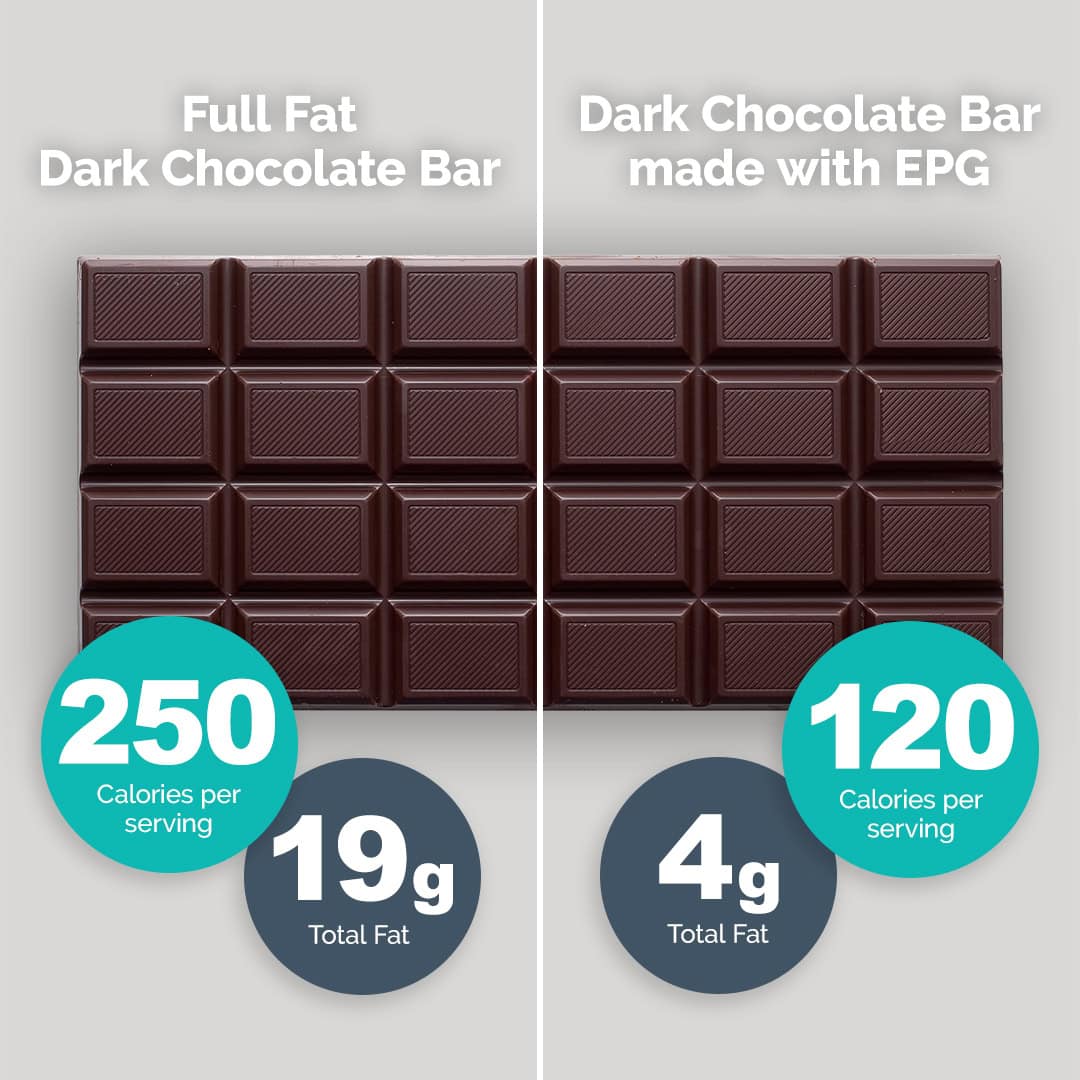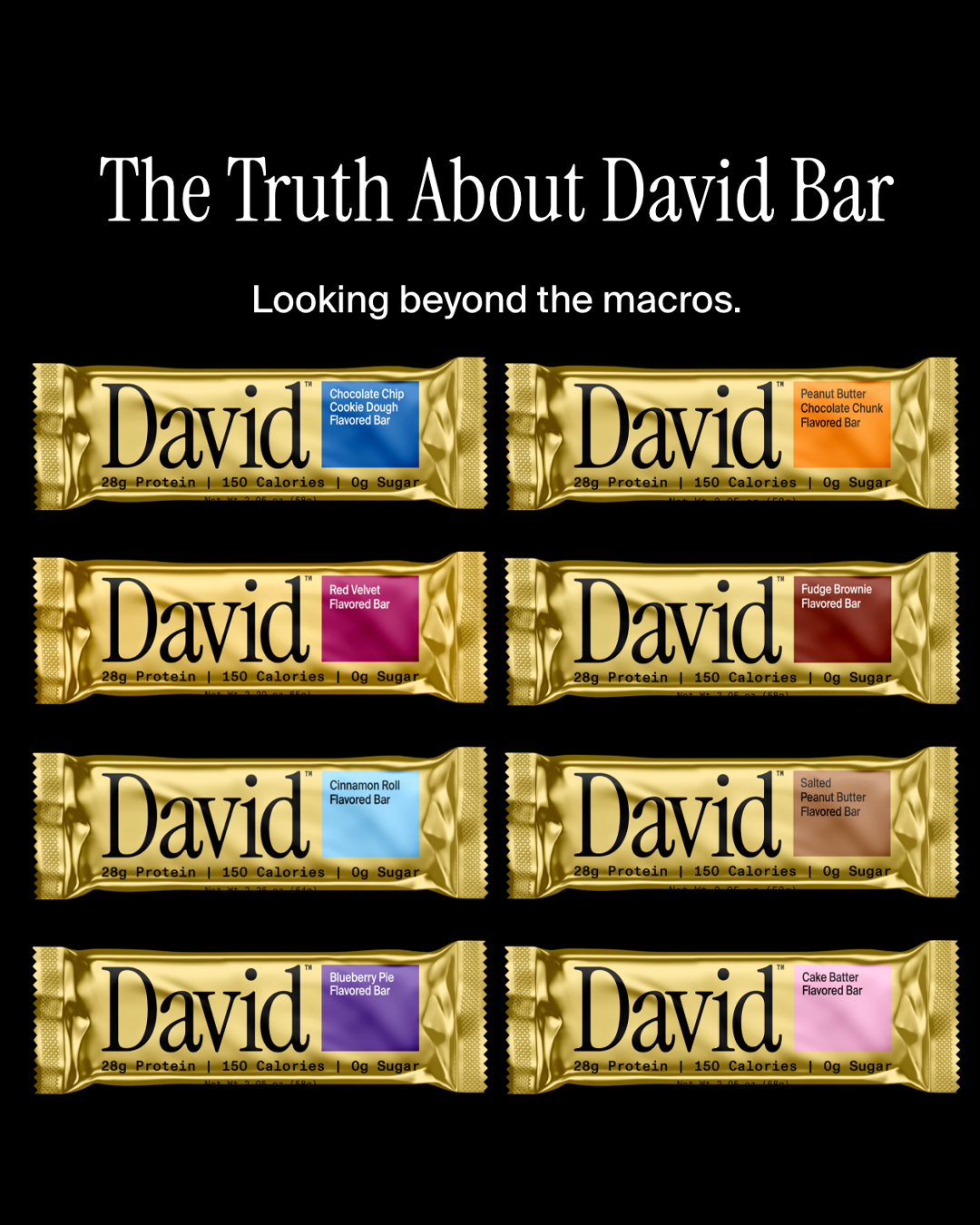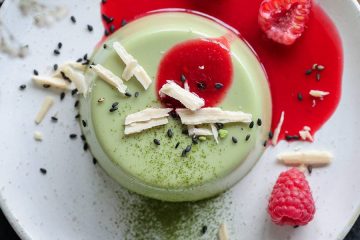If you’ve been on social media at all in the past year, you’ve probably seen David Bars everywhere. The viral protein bar with “impossible” macros that has everyone talking: 28 grams of protein and only 150 calories.
That’s basically a protein shake in bar form.
I’ll be honest, when I first saw those numbers, I was skeptical. We’ve never seen anything like this in the protein bar space.
But after digging into what’s really happening behind the scenes and actually trying these bars myself, there’s way more to this story than just impressive macros.

What Are David Bars?

David Bars are a viral protein bar that launched in 2024 with some seriously impressive macros: 28 grams of protein and only 150 calories per bar. The industry has never seen a protein bar with that kind of protein-to-calories ratio, which set David bar up to become a viral sensation.
They were created by Peter Rahal, the co-founder of RXBar with a very proven track record, and named after Michelangelo’s David statue (hence the gold packaging and “perfection” positioning).
What makes these bars different is their use of EPG (Esterified Propoxylated Glycerol), a modified plant fat that has only 0.7 calories per gram compared to regular fat’s 9 calories.
I’ll do a deeper dive into that ingredient below, but it’s the “secret” ingredient they use to keep the calories so low.
The bars have taken social media by storm, going from zero to potentially $140 million in revenue in their first year. But finding success that quickly often comes at a price…
The Secret Ingredient That Makes It All Possible
The magic behind David Bars isn’t some revolutionary new protein blend. It’s an ingredient called EPG (Esterified Propoxylated Glycerol), and it’s basically the fat equivalent of artificial sweeteners.
Here’s how it works: regular fat has 9 calories per gram, but EPG only has 0.7 calories per gram.
Why? Because your body can’t actually digest it properly. They take regular plant oil and modify it so that your digestive enzymes can’t break it down. It basically goes right through you and you poop it out, but you still get the mouthfeel and satiety of real fat.

This isn’t some brand new invention that David created. EPG has been around for years, and other companies have been using it successfully:
- Own Your Hunger makes amazing half-calorie spreads and Wonder Squares that are delicious
- Nick’s Ice Cream uses it to create one of the better light ice creams out there
- Legendary Foods has been using it in their Sweet Rolls
- Gatsby Chocolate was even on Shark Tank using this ingredient
- Defiant Chocolate uses it for a high-protein chocolate bar
These companies have been quietly making great products with EPG for years. They just never went viral the way David Bars did.
How David Swooped In and Stole It All

Here’s where the story gets really messed up. David Bars blew up, raised $75 million, and used that money to buy Epogee, the company that makes EPG.
At first glance, that sounds like smart business: secure your supply chain, right?
But they didn’t just secure their supply. They eliminated everyone else.
In May 2025, David bought Epogee and immediately told all the existing customers that they could no longer get EPG.
Companies like Own Your Hunger, which built their entire business around this ingredient, suddenly couldn’t place new orders. We’re talking about small businesses that had been using EPG for years before David even existed.
There’s now a federal antitrust lawsuit claiming David engaged in what they call a “bait and switch” scheme. The allegations are that David secretly negotiated to buy Epogee while stringing along other companies, and that they stockpiled two years’ worth of EPG supply before cutting everyone else off.
Here’s what really bothers me about this: you don’t have to be this ruthless just to get ahead.
You could buy the company and grandfather in existing customers. You could say new companies can’t use EPG going forward, but existing products stay on the market.
Instead, they basically eliminated small businesses that were doing this first and doing it well.
In an industry that thrives on innovation and is driven by small businesses, there’s no place for this.
Companies like Own Your Hunger aren’t just losing a supplier- their entire business model just got destroyed because David wanted to corner the market on an ingredient they didn’t even invent.
David’s “Scientific” Ingredient Marketing
Let’s put the acquisition aside for a minute to talk about how David markets their ingredients, because it’s unlike anything I’ve ever seen on food labels.

Rather than simply list the ingredients, they break everything down into these fancy “systems”:
- Protein System: Their protein blend
- Binding System: What holds it together
- Fat System: The EPG
- Flavor System: “Key components include cocoa powder, natural and artificial flavors, salt, sucralose, and acesulfame potassium”
How is cocoa powder and salt a “system”? This is just normal ingredient marketing dressed up to sound more scientific than it actually is.
As someone who focuses a lot of social media content around silly marketing tricks, even I have never seen something like this before.
Speaking of ingredients, David has clearly shifted from their original “functional nutrition” positioning to using cheaper ingredients as they’ve scaled. They recently switched from stevia and monk fruit to sucralose and acesulfame potassium. They claim it’s for taste, but let’s be real, sucralose is way cheaper than stevia.
They also admit their EPG can technically be made from seed oils (rapeseed oil specifically), which is interesting given how much the health community talks about avoiding seed oils.

I’m not personally anti-seed oil, but I find it very interesting that seed oils can be hidden behind the EPG label without consumers realizing it.
And yes, their bars contain artificial flavors despite trying to position themselves as a premium, science-backed product.
I Actually Tried Them – Here’s My Honest Take
I found David bars at Vitamin Shoppe, and while I was not excited to spend $4 on a protein bar, my curiosity got the best of me.
Granted, I purchased the bars before the controversial news, so I wanted to try them and give them a truly objective review apart from everything else.

Size: Credit where it’s due, because for 150 calories, these bars are an impressive size.
Texture: They’re very sticky but not overly chewy, which is actually nice. The texture is good- cookie dough-like and not like a typical chewy protein bar. The EPG definitely helps create a softer texture that eats more like peanut butter-based protein bars than bars with tons of fiber.
The Crisps: They have whey crisps in them, but they taste like stale rice crispies and don’t add much. They kind of throw me off and I wish they were just soft throughout with regular chocolate chips or other mix-ins instead of these crunchy bits.
Flavor: This is where things fall apart. The artificial flavor definitely comes through. The chocolate one tastes exactly like chocolate protein powder. If you’ve ever made homemade no-bake protein bars with protein powder and sugar substitute, that’s basically what this tastes like. The cookie dough flavor I tried had that same protein powder flavor and was very average tasting.
Overall: It reminds me of something you could make at home with protein powder, but the EPG gives it that softer texture. The macros are legitimately impressive, but for $4 per bar, it’s absolutely not worth it. It’s very average tasting, and there are far more delicious options for way less money.

The Truth: I’m sure there are people out there who legitimately enjoy these protein bars because we all have different taste buds. But there are two things I know to be true:
- This bar tastes better because of the macros. If you try this bar and truly dislike it, knowing it contains just 150 calories with 28 grams of protein will have you willing to look past it and convince yourself it’s better than it is.
- Countless influencers have received these bars for free, even before the bars launched publicly. I think I’m a pretty rare breed of content creator who will accept free products but only if the company agrees that I can post 100% honest reviews and feedback, even if negative. The vast majority of people out there will always speak positively about a free product they receive. I can’t blame David for sending free product, but when companies do that in such large quantities, you have to be skeptical of the reviews.
The Bottom Line

David Bars represent what happens when legitimate food science innovation gets overshadowed by questionable business practices and over-the-top marketing.
The EPG technology is genuinely impressive and allows for macros we’ve never seen before in protein bars. But David didn’t invent this ingredient, they just went viral using it and then bought out the supplier to eliminate their competition.
The bars themselves? They’re fine.
The texture is decent thanks to the EPG, but the flavor is very much “protein powder in bar form” with artificial flavors coming through strong.
At $4 per bar, you’re paying premium prices for marketing.
I’ll give David Bars credit, because they created the perfect product for virality. I’ve never seen a product launch and blow up so quickly. Thanks to the impressive macros, they were able to grow almost exclusively through word-of-mouth on social media.
But here’s what really gets me: there were companies making better-tasting products with this same “special” ingredient for years.
Own Your Hunger’s products are genuinely delicious. But because David had better marketing and went viral on TikTok, they were able to raise millions and essentially steal the ingredient from everyone else.
The federal lawsuit will determine whether this was legal monopolization or just aggressive business strategy (I’ll update this post once there is some kind of resolution).
But regardless of the legal outcome, it’s a perfect example of how viral marketing and venture capital can allow one company to dominate an entire ingredient category, even when they’re not necessarily making the best product.





